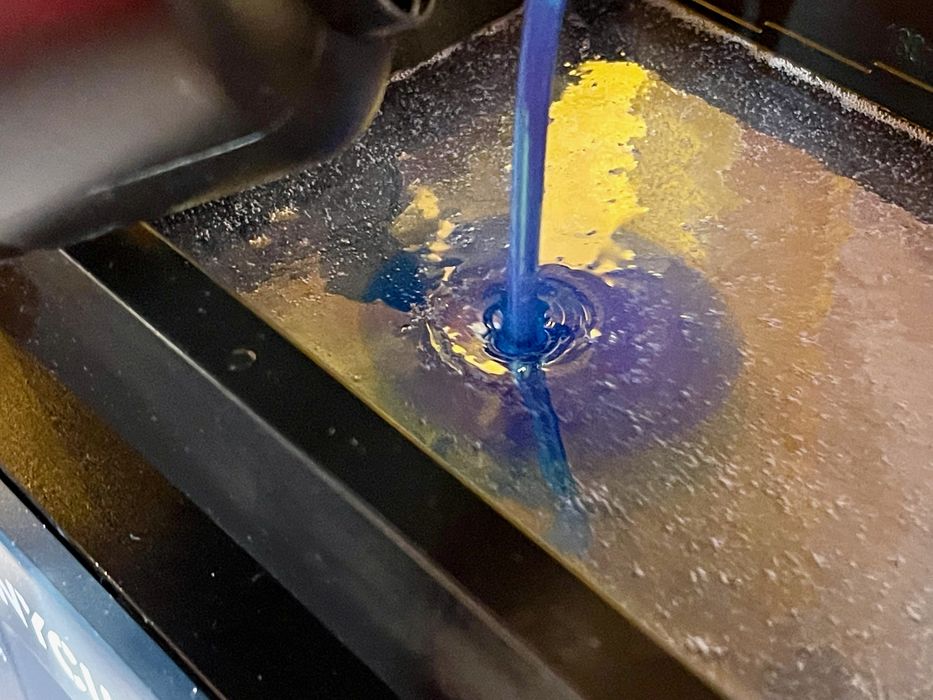
There could be a massive problem for desktop resin 3D Printing in the future.
I read a post about someone’s large resin print, and the comments were surprisingly focused on resin safety. This led me to believe there is a risk of future regulation for this technology.
The issue is all around the resins used in desktop 3D printing. Almost without exception, they are toxic to varying degrees. This is because of the photoinitiators within them that cause the resin to polymerize when exposed to UV light.
The only exception to this could be CARIMA’s CMYK “Non Toxic” resins, which we recently tested in our lab.
The Dangers of Toxic Resins Used in Desktop 3D Printing
It is a requirement to avoid contact with the toxic resins while working with them. This means the operator must wear PPE, including safety glasses, nitrile gloves, sleeves, and even respirators, as the resins can emit particles into the air: that’s what you’re smelling.
If one receives over time exposure to a sufficient amount of these toxins, the body will eventually begin reacting. Subsequent exposures could manifest as rashes, blisters, coughing or other symptoms, and sometimes can be quite severe. There are people who, having done substantial resin 3D printing, can no longer be in the same room as an open resin container.
The problem is quite nefarious because of the reactive sequence: nothing much happens, until it does, and then it’s too late. Because there’s no immediate effect, some 3D printer operators take the issue of resin safety far too lightly.
While many people do have very safe procedures when using resin, there are those who do not. I’ve seen videos of folks handling wet resin prints with bare hands, and washing them in IPA (which tends to open skin pores to allow even more toxins to enter).
That’s all bad stuff, and the reason why I continually mention the issue of resin safety whenever I get the opportunity. I’m hoping my ranting has persuaded at least some readers to take more precautions than they were doing before.
But in thinking about this further, I believe there is a notable risk, one that has a low probability of occurring, but one that could devastate the desktop resin 3D printer market: regulation.
Potential Ban on Desktop Resin 3D Printers Due to Safety Concerns
Imagine a future where there are many resin 3D printers deployed in the world, and a reasonable percentage of operators are sloppy when it comes to PPE and safety procedures. We may see a growing group of toxin-affected individuals, who will have been locked out of their machine due to their bodily reactions.
If that group is sufficiently large, there is a possibility that governments and regulatory agencies may become aware of the problem.
And then they may take action. Having realized that the a chunk of the general public is handling toxic materials in their homes incorrectly, they may enact rules to prevent those bad effects.
I realize that most homes already have lots of toxic items present, and there are no rules for, say, pouring bleach all over yourself. But this is a world of social media, reactivity, and pursuit of news attention. Somebody eventually will want to gain political points by talking up the “dangers of 3D printing”, and that homes should be “safe for children”. It will be too tempting to resist, for some, once they are aware of the situation.
While an outright ban is unlikely, it is possible that the regulations might require resin 3D printers to be designed in such a way so that the operator is not exposed to the resin.
That’s certainly not the case with the majority of inexpensive desktop resin 3D printers these days. They are designed to be low-cost, and safety is often left up to the procedures of the operator. “Please wear PPE” is about all you get.
Higher-End 3D Printers Offer More Protection from Toxic Resins
There are some higher-end machines that have essentially closed systems where it’s far more difficult to encounter resin, such as devices from Formlabs, Nexa3D and a few others.
But those machines are out of the price range of most of the buyers of inexpensive desktop resin 3D printers. If such regulations appeared, 3D printer manufacturers would have to go back to the drawing board and redesign their equipment to be far safer. This would inevitably cost more, and possibly collapse the market for inexpensive desktop resin 3D printers.
But for those using these newly-designed machines, it would indeed be far safer.
For now, there are no rules other than those we impose on ourselves when using these desktop resin 3D printers.
Please be safe.

Good article. As a lab safety officer and a maker (fdm printer) I actually am one of those who would rally for regulation on resins (and ipa). And may I point out that the technology of resin printers is great and nothing will stop that. But we need safer materials. I would suggest a license procedure to take place before any consumer can purchase those chemicals used now with resins. It would drive the evolution of resins.
That would be the holy grail to persue to make the technology idiot prove on that part.